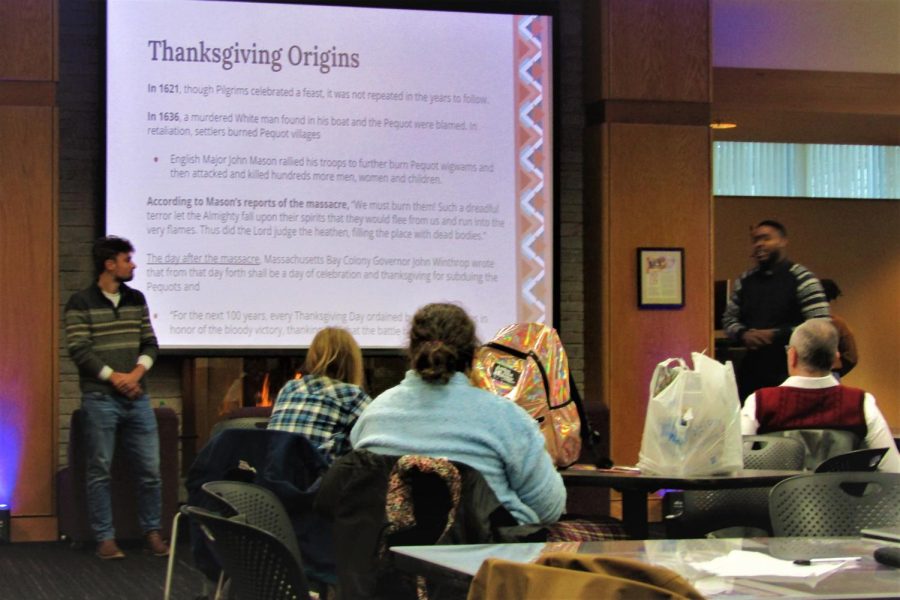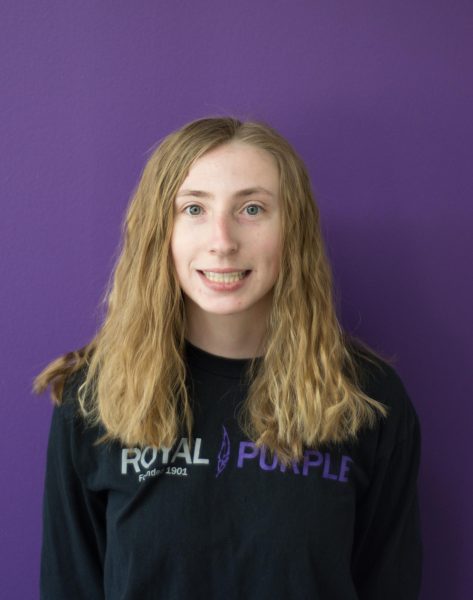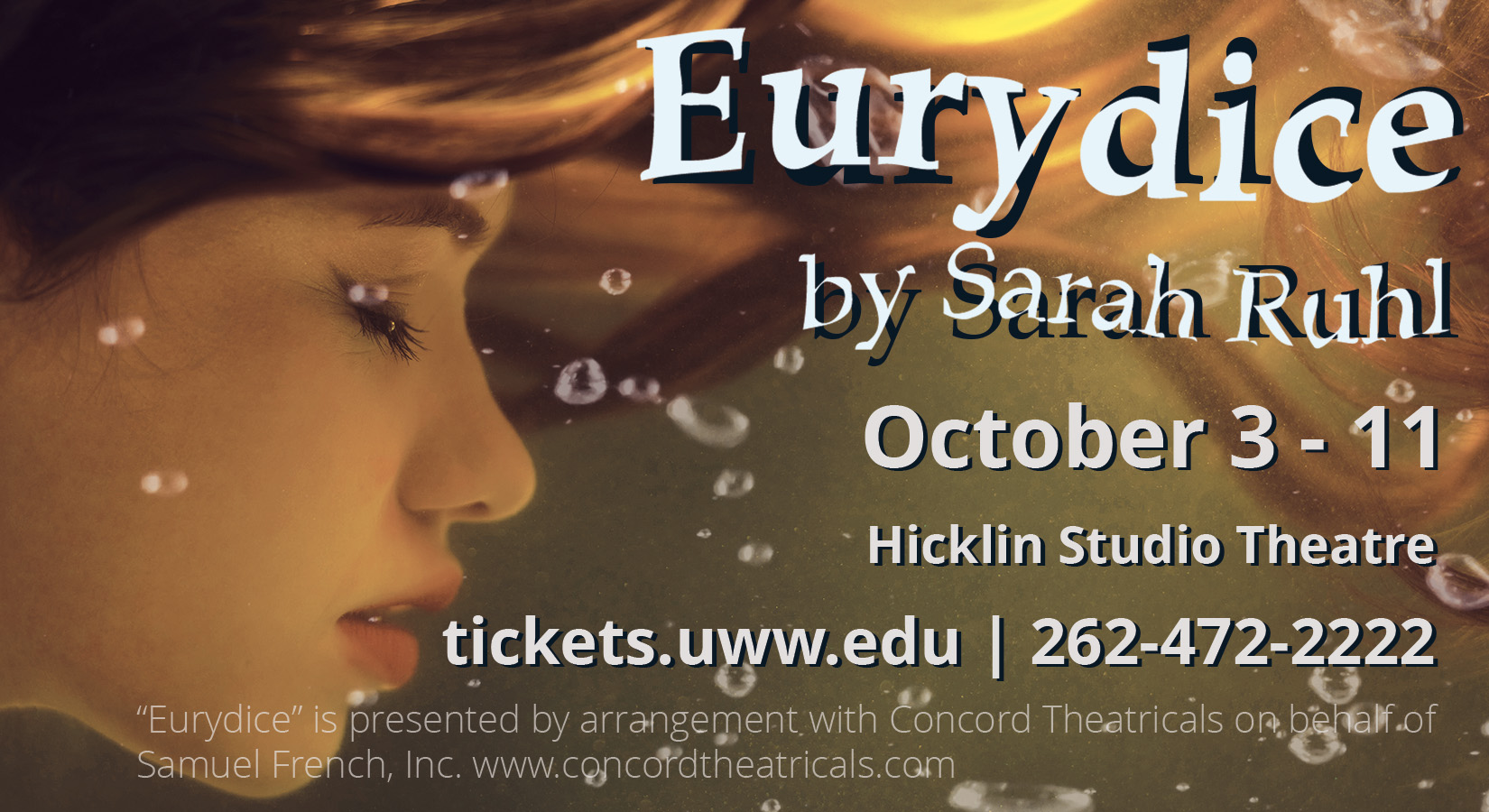The origin of Thanksgiving
The history behind the meal
People gather at the UW-Whitewater Warhawk Connection Center to listen to a presentation on the origins of Thanksgiving Nov. 22 2022.
November 28, 2022
What comes to mind when you think of Thanksgiving? Perhaps you may think of friends and family gathering at a table of beautifully prepared food or some good old fashioned football. You may also think of the story that most have been told, which was that the Indigenous people helped the pilgrims grow crops and find food; however, the unfortunate reality is that none of the origin story that has been traditionally told is true. Members of the WCC and the Native American Culture Awareness Association(NACAA) came together to inform students of the true origins and misconceptions of the thanksgiving holiday.
WCC program specialist Aaron Broadwater presented alongside Native American Support Services Coordinator and President of NACAA Micheal Bose, and WCC intern Kaylynn Brown presented where they talked about the true history and the misinformation. They also played true or false games throughout the presentation to give the audience a chance to test their knowledge.
The presentation covered several different topics regarding the origin of thanksgiving such as the history, misconceptions of the history, misconceptions of indigenous people, and what people can do in order to bring awareness to true native culture and the history behind the day.
“We don’t want people to not celebrate Thanksgiving with their families, we just want to bring awareness to the true history behind it as an opportunity to educate others so they are better informed both of its origin and indigenous culture,” said Broadwater.
In the presentation, they dispelled the myth that the pilgrims lived in harmony with the native peoples and shared a large meal as the establishment of the first thanksgiving meal. The truth is that the pilgrims often attacked the native peoples, specifically members of the Wampanoag tribe who once resided in southwestern Massechuttes, organizing slave raids where they would take members of the tribe as slaves or to be killed. As more settlers came to establish colonies, more land was taken from other tribes and in 1636 a white man was found dead in his boat which was then blamed on the native peoples. In retaliation the colonists burned down their villages, killing hundreds. It is then that Govenor Winthrop established a meal of thanksgiving for their victory over the indigenous peoples.
There were attempts to establish diplomacy between the early American settlers and Wampenoag. The Wampenoag tried making tribal agreements and peace talks with settlers to help with food and other resources in times of struggle since it was their belief that everything should be shared, but the agreements were always broken by the English government who instead repeatedly attacked the tribe, taking members as slaves.
After giving a brief overview of the history behind thanksgiving, the presentation focused on the point of view of the indigenous people who observe Thanksgiving as a day of mourning and prayer for the ancestors that were lost. Though they do observe the day with food it is a meal of foods of their culture like fried bread, squash, cranberries and venison.
Other things that were touched on included misconceptions indigenous people and what benefits they receive. A big misconception is that most native peoples were given free education or large scholarships, that most of them live off of government assistance, and that they get rich off of casinos, but these again were dispelled. Like everyone, members of tribal nations have to work for what they get like everyone else and though there are scholarships for natives, they have to be a federally recognized tribe to which over 400 are not federally recognized. Also, they are the only group that has to establish by a blood test the percentage of native blood they have before they are eligible to receive funding.
The presentation then shifted to a much lighter tone in celebrating the excellence of a number of indigenous politicians, musicians, writers, and athletes which included basketball player Sonny Dove, guitarist Jimi Hendrix, and Politician Deb Haaland. The presentation concluded with some activities that could be incorporated into the traditional thanksgiving. “There are many alternative ways that you can use this to remember what happened by going to an indigenously owned store, making a traditional cultural food, or donating to the local nation,” said Micheal Bose.
Though the origin of Thanksgiving may be dark, we can use the day not only as an opportunity to remember the suffering of the indenous people, but also to teach others within our family and friends, and bring about change.















